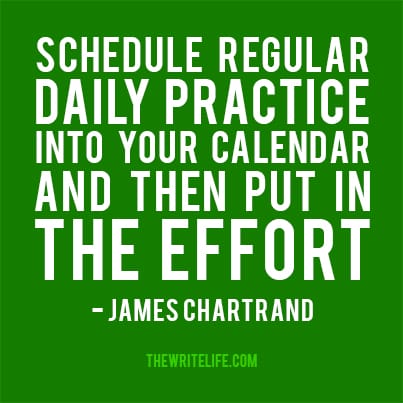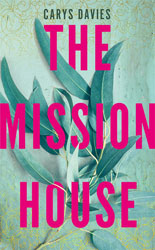The Tenement
The tenement was home to an old taxi driver. The building looked ancient – the old man liked to boast it had been built before the Meiji Restoration of 1868. It was a total wreck, and he was the only person living there. The tenement consisted of a terrace of four houses: the taxi driver lived in the one on the far left, while his taxi occupied the one on the far right, which had been stripped of its floor and walls.
The old man didn’t work much. In fact, he took his taxi out just two days a week. He’d leave around noon and be back by evening.
Once a year, the old man would leave his house for three days straight. That was in mid-January, the period that used to be called the second New Year. He would wake up the morning of his departure and prepare a dozen rice balls. Then he would fill a big Thermos with tea, and pack six boiled eggs and six mandarin oranges.
The old man would set off around noon, a satchel full of food on the seat beside him. The first afternoon was spent driving all around the neighbourhood. Our district was so small he could have covered every street in less than half an hour, but the old man stopped to rest at each park or local shrine he passed, and sat in his car for close to an hour near the main shopping area, so that by the time he had completed his route, the day was already over.
Although the old man was presumably alone all that time, strangely the rice balls, boiled eggs and mandarin oranges had somehow disappeared when he’d finished his round. The old man hadn’t eaten them. We knew that because, as was his custom, he went on to the noodle restaurant Ramen Five in the centre of town for their ramen-and-fried-rice special.
When night fell, the old man drove to the Chūō Expressway. Where he went from there was anybody’s guess. We heard that someone had seen him exiting the expressway near Kōfu to head into the mountains, but that was just rumour.
‘Where do you disappear to, anyway?’ the woman who runs the Love, the small local drinking place, finally asked him.
‘I go driving with the girls,’ he replied.
‘The girls’ were the women he claimed inhabited the empty houses in the tenement. There were three, all of whom had died in the years before the Restoration.
‘You mean they’re ghosts?’
‘Ha-ha-ha. Yep, you could say that, but women are women. They’re still fun to have around, even if they look sort of blurry and don’t have legs.’
Having three must be a problem sometimes, the woman from the Love teased. The old man guffawed.
Not long ago I went down to the town hall to check their registry. The tenement had been built just after the Second World War, it turned out, and the records showed no one presently residing there.
Yet the old man is still living in the tenement. ‘Aren’t you a ghost yourself?’ the woman from the Love asked him, but he just laughed. Then he went down to Ramen Five and polished off their ramen-and-fried-rice special, with side orders of Chinese chive dumplings and pickled bamboo shoots, in the twinkling of an eye.
The Magic Spell
The Kawamata family came back from America.
The father and mother had headed off to America immediately after they were married to spend ten years running a business in California, then they shut up shop and returned to Japan with a hefty chunk of foreign currency.
‘And they got to know some Hollywood stars, too!’ one of the neighbourhood women gushed. As you might expect, their daughters were thoroughly American. Dolly was the elder, and Romi the younger. Dolly was five and Romi two, and they sported matching lace-up shoes.
Kanae was fascinated by the whole Kawamata family.
‘Let’s go and pick on Dolly,’ she said to me. ‘Let’s show her how mean Japanese kids can be.’ So off we went to the park where Dolly was playing.
Dolly had built a mountain in the sandpit and was busy digging a tunnel through the base of it.
‘You’re going to get it now, Dolly!’ Kanae jeered. But Dolly kept working on the tunnel as if she wasn’t there.
When we took a closer look, we saw that the mountain was much more polished than what a child would normally build. The peak was firmly packed, and the sides sloped gently towards the bottom in a leisurely arc. Even the tunnel wasn’t a simple hole but a deftly shaped horseshoe.
Kanae and I stood there lost in admiration, our plan to torment Dolly forgotten.
Dolly was painstaking in her work. She’d dig out a little sand, toss it away, and pat the sides of the mountain to firm it up. Then she’d scrape out more sand and throw it away. Now and then, though, a small part of the tunnel would collapse, and Dolly would cry out, ‘Oops!’
Kanae and I were amazed – we’d never heard the word ‘oops’ before.
‘What did she say?’
‘Maybe it’s a magic spell.’
Dolly patiently completed the repairs, then returned to her digging. But the tunnel suffered another partial collapse.
‘Oops!’ she cried again. We jumped out of our skins. By the end of the day, she had uttered ‘Oops!’ a total of twenty times.
Dolly was still digging when Kanae and I visited the park the next day. This time there were seventeen ‘Oops!’ There were nine the following day, but the day after that was Sunday, so we didn’t go to the park.
From then on, Kanae and I took to chanting ‘Oops!’ when we buried treasure or placed a curse on someone.
The Kawamatas eventually settled into the neighbourhood. Before long Dolly and Romi’s mother was calling them Midori and Hiromi, and no one could tell they’d once lived in America; yet Kanae and I continued to intone ‘Oops!’ whenever the need arose.
The very last time we used it was in third grade. ‘Make our breasts big!’ we implored, then solemnly chanted ‘Oops!’ twenty times each. Kanae and I wanted to grow breasts as quickly as possible so that we could fight aliens, wicked religious sects, and other forces of evil.
Sports Day
‘They’re going to hold Sports Day again,’ Kanae told me, as if sharing a big secret.
Our school’s last Sports Day had taken place three years earlier. The police department had sponsored it, which may help explain why the events had centred around the martial arts and marksmanship. Three students from our school had taken first prize: Kiyoshi Akai in the ‘thirty kilos and under’ class in judo, Dolly Kawamata in the ‘kata’ division in karate, and Kanae’s sister in the grade-school air-rifle competition. Kanae’s sister’s surprising success – she had been shooting for less than a year – inspired the police to send a recruiter to her home, but she turned him down flat, saying her plans for the future involved becoming a medium who communicated with the dead. Her parents displayed the Walther air rifle she had used in the competition on their living-room wall: when their home was broken into the following year, and the criminals took the parents hostage, Kanae grabbed the gun and faced them down, ending the stand-off.
‘You’re not the only one who can handle an air rifle,’ Kanae had boasted triumphantly to her sister. That’s when we realized how envious she had been. Her sister, by the way, had at the time been cloistered in the mountains with a group of budding spirit mediums at a kind of training camp.
The sponsor this time around was the local Marunaka Bank. Their plan was to open their doors and hold the events on their premises. These would include competitions for best loan evaluation, best anti-fraud strategy for direct deposits, best marketing of financial products, best cheque clearance procedure, and best cartoon character for their bank ads.
Most popular by far was the money-counting competition – everyone’s hands shot up for that. Kiyoshi, Michio and the others shouted so loud, in fact, that the classroom window cracked. In the end, the paper-scissors-stone method was used to choose the competitors, but when Kiyoshi and Michio lost, they stamped on the floor with such force in their frustration that they cracked one of the floorboards.
Kanae never raised her hand for any of the events, remaining cool and collected even when the money-counting competitors were being chosen. She kept scribbling furiously in her notebook, only now and then glancing up at the ruckus the boys were making.
‘What’s that you’re writing?’ I asked.
‘My fantasy investment portfolio,’ she answered.
Kanae had been building that portfolio since the third grade. At present, it amounted to a bit over thirty million yen on paper, though she had started it with a mere ten thousand yen in fictitious funds. She was pretty proud of that.
‘So do you actually have thirty million in the bank now?’ I asked in amazement.
She gave a derisive snort. ‘I told you, it’s a fantasy portfolio,’ she said.
‘Something like getting rich in The Game of Life?’
‘A bit different. But not altogether.’
She turned away from me and back to her notebook. I noticed she had inserted earbuds in her ears. She was listening to the radio.
Sports Day was held in the autumn, and this time it was the grown-ups who won. They aced the money-counting, the best marketing of financial products, and almost all the other competitions. The kids were really disappointed. Only Romi Kawamata won anything, the runner-up prize for best cartoon character for her ‘Sea Hare from Hell’. First prize went to the dog school principal, who of course had submitted a cartoon dog.
‘That’s so old,’ the kids complained. ‘Cartoon dogs haven’t been cool for, like, ever.’ But the judges were the bank’s managers, so there was nothing anyone could do. Kanae didn’t participate in the competitions, instead throwing her energies into the day trading of stocks, so that by the end she had raised her net worth past the fifty million yen mark. The cracks in the school window and floor were never repaired, standing as reminders of the local bank-run Sports Day, in which no event involved any form of physical activity.
Cover artwork by Clare Skeats, Karen Britcliffe and Martin Slivka
The post People From My Neighbourhood appeared first on Granta.




